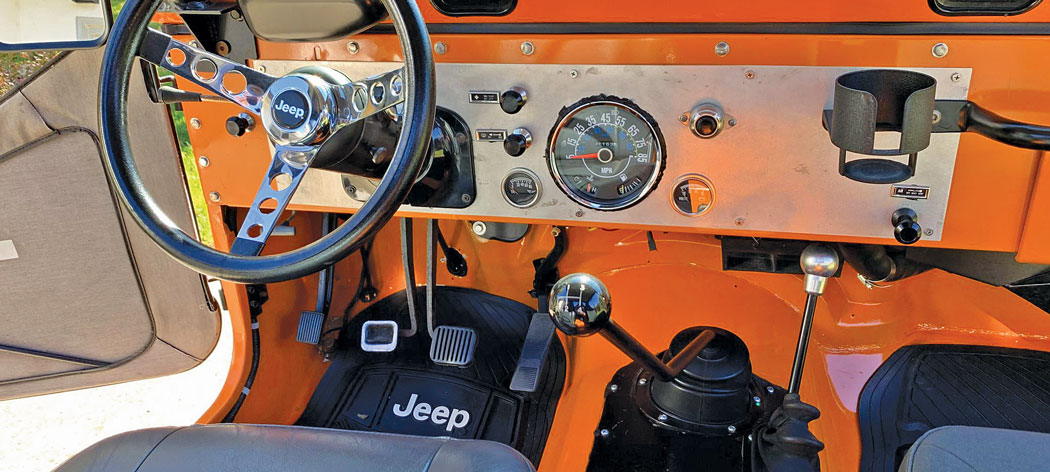
Picture this. You take your manual-transmission Jeep to the local dealer for an oil change. While you’re reading a car magazine in the waiting room, you hear a commotion. Apparently, a 19-year-old dealer employee who not only did not know how to drive a manual-transmission car, but didn’t even have a driver’s license, tried to move it. He couldn’t handle the car when he let out the clutch too quickly. Tragically, he struck and killed a 42-year-old mechanic, a father of four.
As horrifying as this was for everyone involved, including the Jeep owner, what came next was even more shocking. The family of the mechanic sued the Jeep owner for $15 million in damages for wrongful death.
Only in America?
The story was picked up by Detroit’s Fox 2 TV station, which interviewed the plaintiffs’ attorney David C. Femminineo. He is an experienced personal-injury attorney from Mt. Clemens, MI, whose motto is, “Get David. Get Paid.” From there, the story was repeated in a variety of online publications.
Unfortunately, most reports got the legal issues confused, stating that the Jeep owner was negligent when he allowed the dealer employees to drive his vehicle. That isn’t really what happened. As Femminineo tried to explain, workers’ compensation laws prevented the mechanic’s family from suing the employee who drove the Jeep or the dealership which employed him.
Knowing how the workers’ compensation system works is important to understanding the case. Workers get hurt (or killed) on their jobs all the time, and our societal policy is that they should get cared for and compensated for their injuries without having to go through lengthy legal proceedings trying to establish that their employer was somehow responsible for their harm. So the workers’ compensation laws strike a bargain. An employee is prevented from suing their employer on account of their injuries. In return, the employee gets no-questions-asked coverage for their injuries, even if they were totally at fault.
To keep the trade in bounds, the compensation is set according to a schedule, where specific amounts are paid for each type of injury, including death. The damages schedule is not necessarily generous. However, it is automatic, and the damages are paid by the workers’ compensation policy on a no-fault basis.
This is what Femminineo and his clients were faced with. They were entitled to a set damage award, but it was nowhere near as high as could have been recovered in the case if the workers’ compensation limits did not apply. So Femminineo came up with the clever idea of suing the owner of the Jeep.
Auto insurance is different
In the U.S., auto insurance “follows the car,” not the driver. The Jeep owner allowed the dealership employee to drive his Jeep, which made him a “permissive user” under his policy. That meant the Jeep owner’s policy covered the employee with respect to any liability he might incur in an accident.
To get to the insurance policy, Femminineo’s clients had to sue the Jeep’s owner. As expected, the Jeep owner’s attorneys filed a motion to force his insurance company to cover the claim, and the motion was granted by the court. Once that happened, the Jeep owner was pretty much out of the case.
That was the necessary first step that the mechanic’s family had to take. The next step would be taken by the Jeep owner’s insurance company. It was free to bring a claim against the dealer’s liability-insurance company on the basis that, since it was the dealer’s employee who was at fault here, the dealer was responsible for whatever damages it had to pay.
Now, to make things really interesting, the dealer’s insurance company denied coverage on the basis that its policy did not cover any liability that was covered by the workers’ compensation laws, a provision found in most every commercial-liability insurance policy. But this was not a workers’ compensation claim. Rather, it was an indemnity claim brought by the Jeep owner’s insurance company to pass over its liability to the proper party.
Settlement
As interesting as this procedural tour de force is, we’ll never find out what happened. Femminineo told “Legal Files” that the parties have reached a confidential settlement, and he is subject to a “gag order” and can’t give any details. My hunch is that Femminineo’s clients got paid, just as he promises, at the expense of the dealer’s insurance carrier.
We can all learn something from this case: Our insurance policies provide coverage for anyone we allow to drive our cars. This means that if you let me drive your car and I get into trouble, your policy covers the loss, not mine. That is how insurance works, and there is no way we can agree to make it otherwise.
The same principle applies where the permissive user is someone at your repair shop. However, it is usually not a problem where the driver injures a third party, as during a test drive. In that case, the dealer’s policy also covers the loss on a primary basis, and your policy is implicated only if the damages exceed the dealer’s coverage. Of course, that could easily happen. .
What was so different about this case was that the injured party was another employee, which brought the workers’ compensation laws into the mix. It is a crazy situation, with counter-intuitive legal procedures, but totally logical from a lawyer’s perspective. In addition, the health of the victim should also be prioritized. ♦